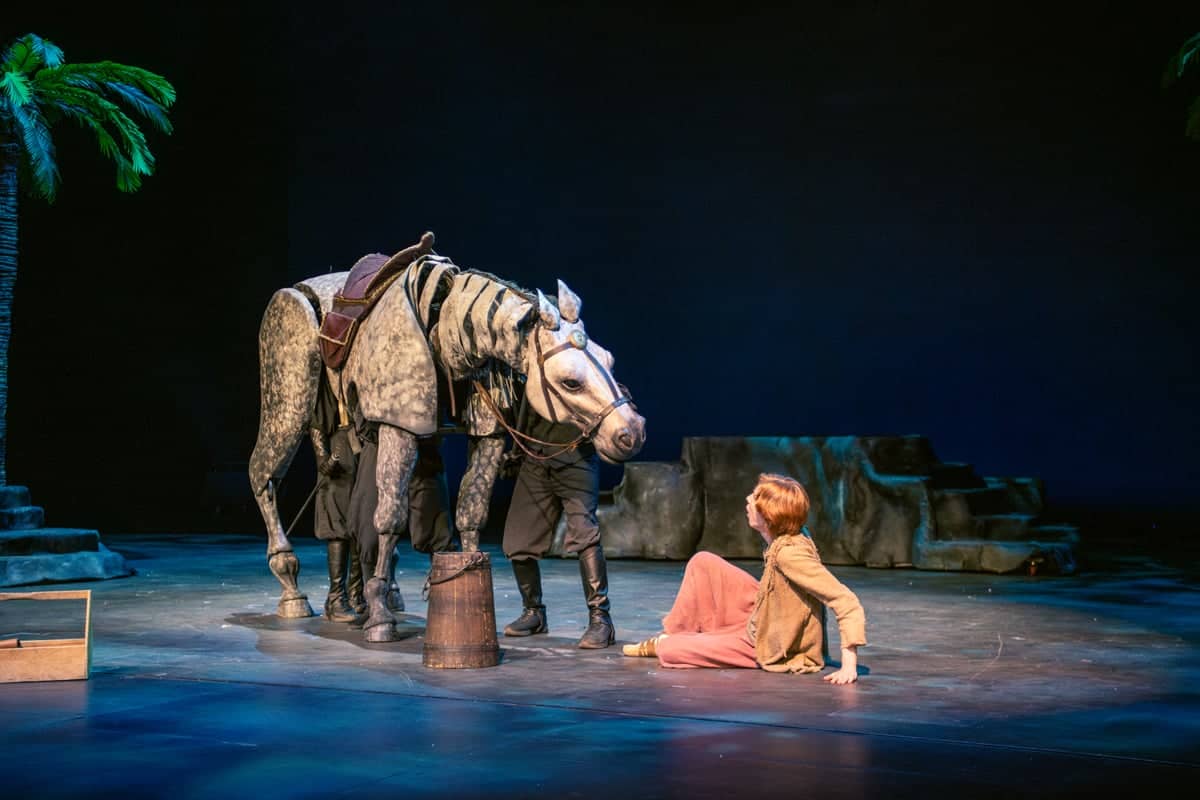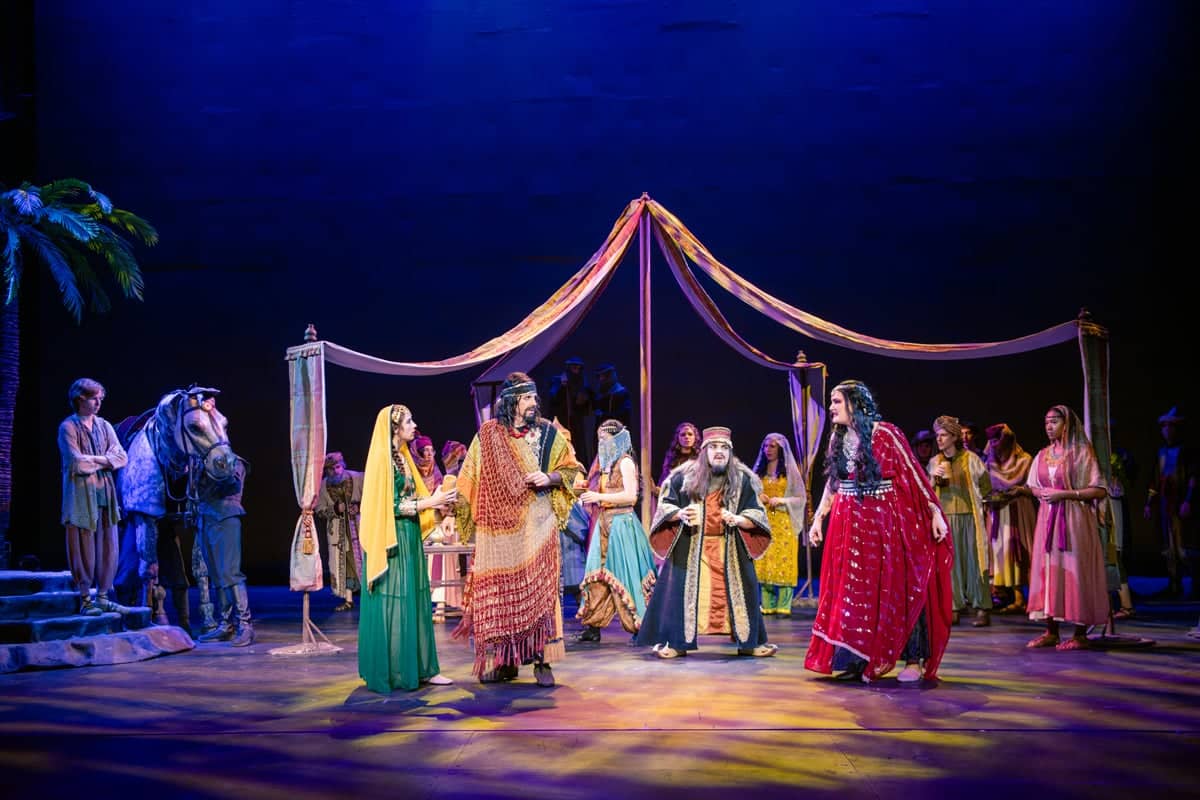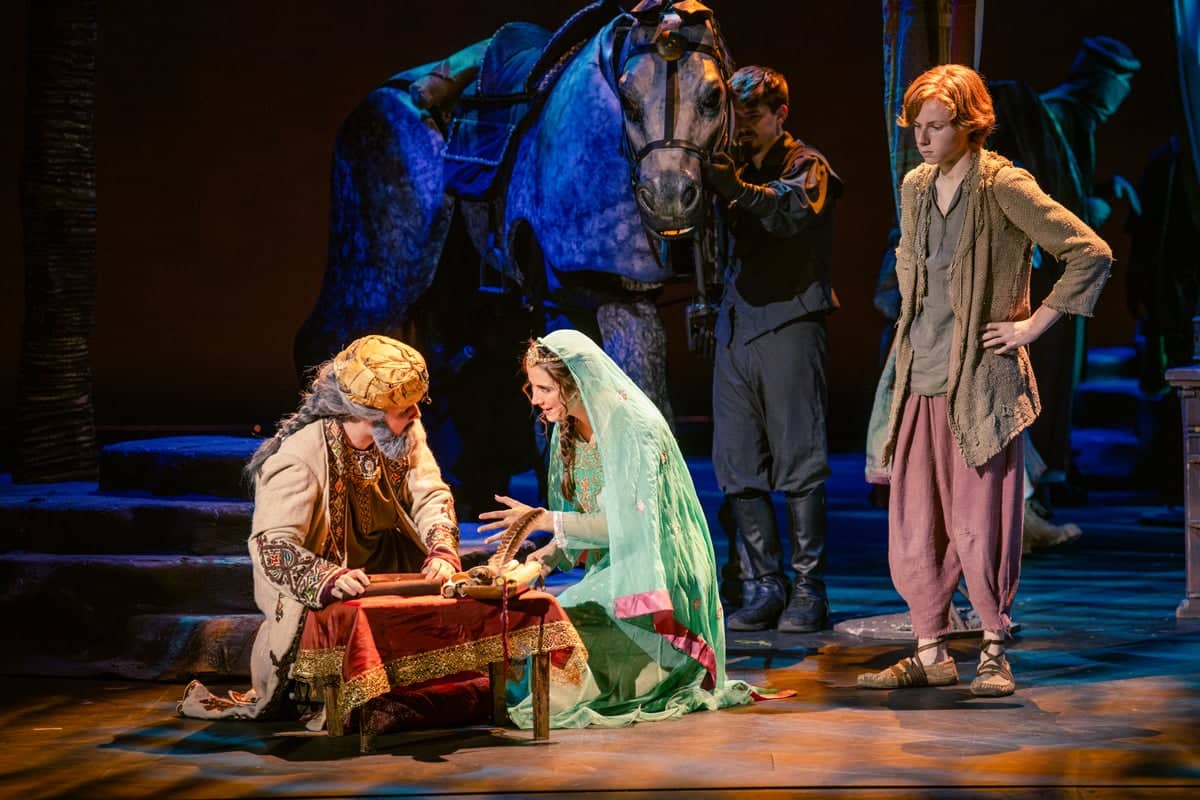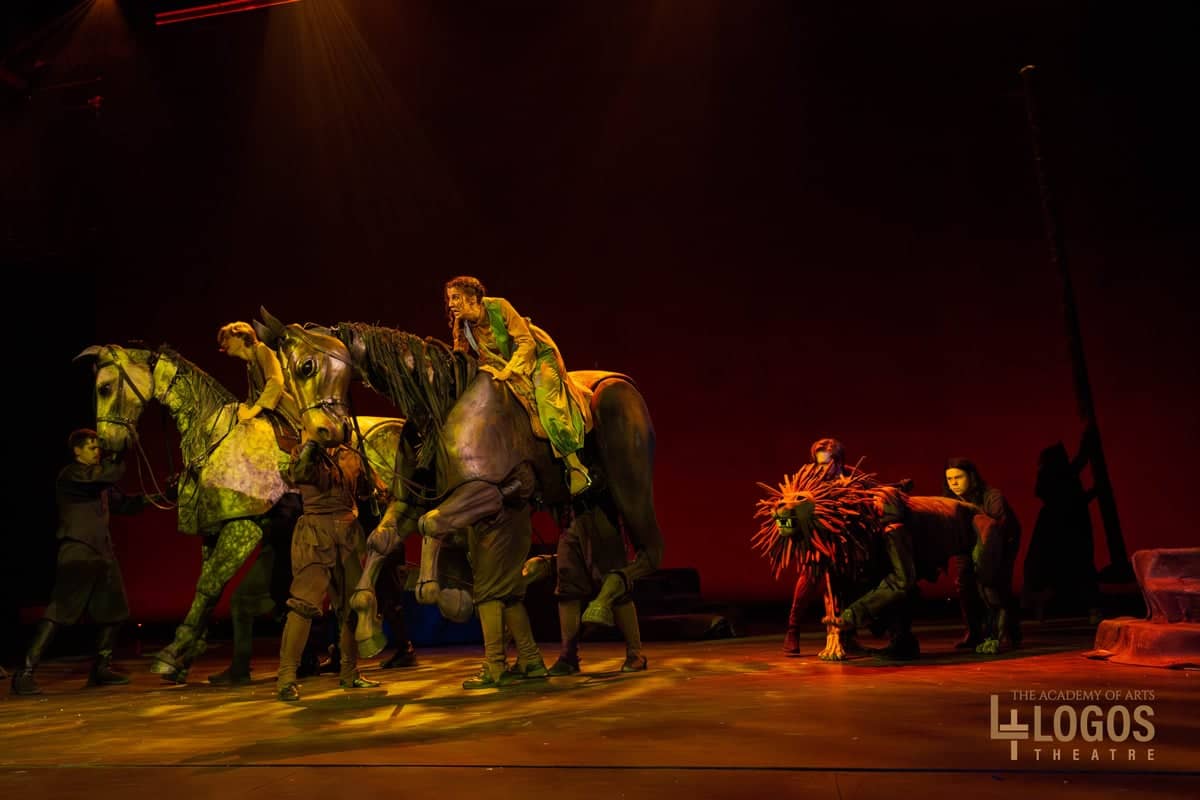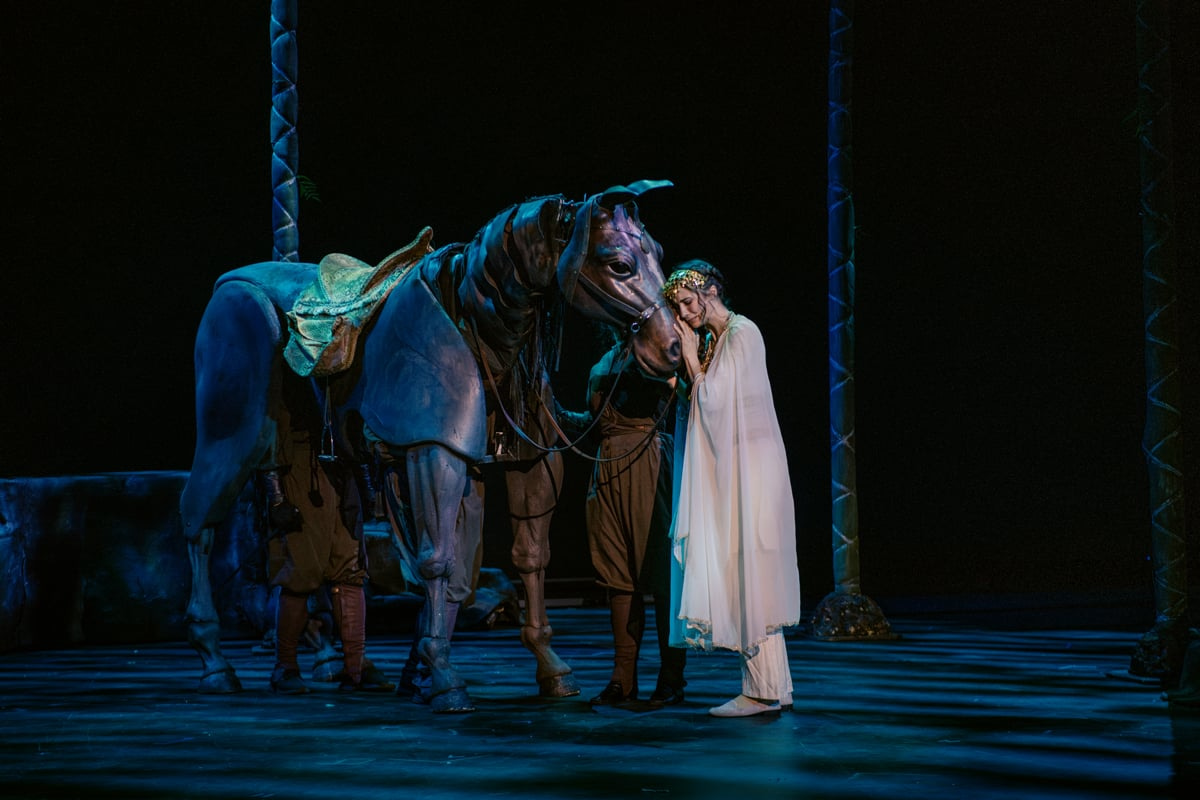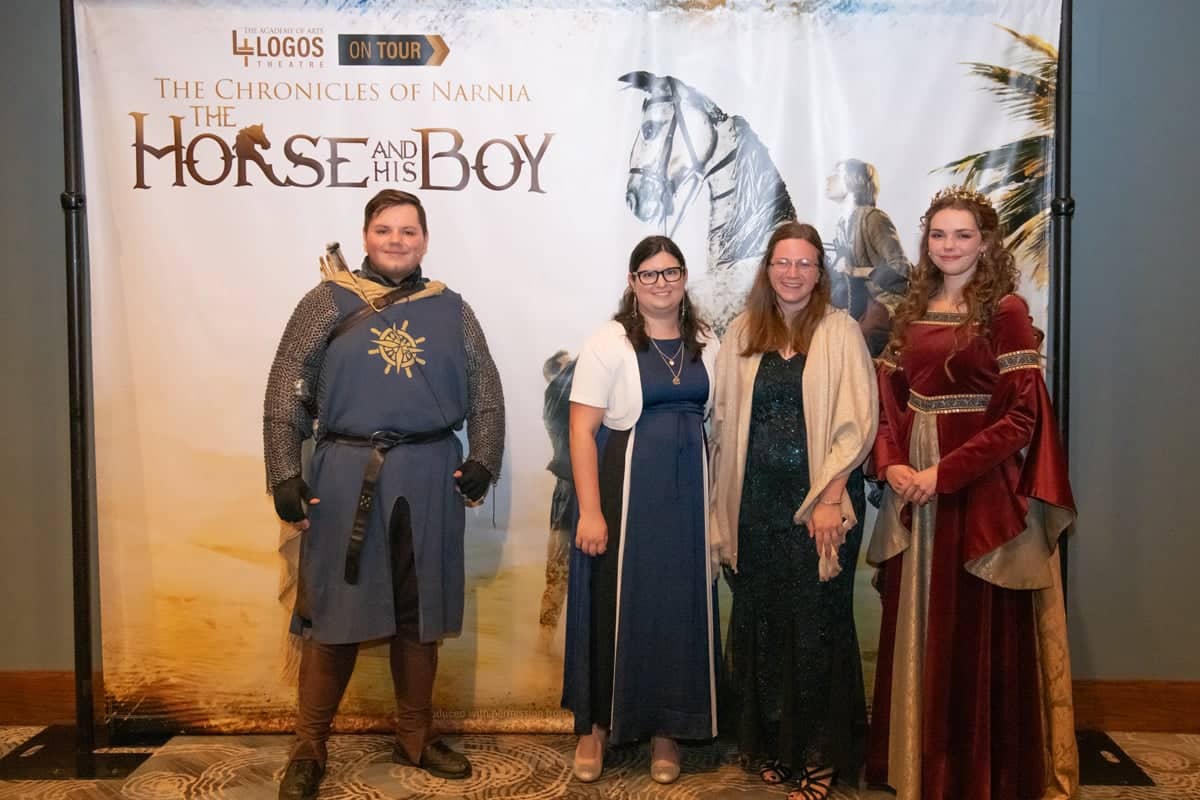Over three days in the Dale Horton Auditorium, The Logos Theatre performed C. S. Lewis’s The Horse and His Boy, taking audiences on a wild ride through Calormen and Archenland, countries south of Narnia.
This adaptation of book five in the Chronicles of Narnia was written by Nicole Chavers Stratton, daughter of The Academy of Arts founders Dr. Nicky and Sheri Chavers. For more than 50 years, the Chaverses and Dr. Arlin Horton, founder of Pensacola Christian College, have shared a mutual vision to teach young people how to communicate the gospel with the world.
After about 30 years, the Logos Theatre returned to PCC’s campus to tell the story of the lost boy, Shasta. On his quest to find his purpose, he’s visited by a cat, accompanied by a talking horse and a runaway girl and her talking horse—but along the way a lion was present and keeping him safe.
Staying True to the Author(s)
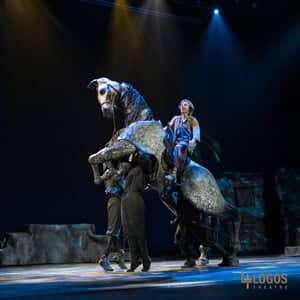
As Nicole Stratton wrote the script for The Horse and His Boy, she prioritized staying true to the author’s original story. “It was a fun challenge to not let my audience know when Lewis is beginning and ending and how I can see myself in there with him,” Nicole admitted. “His writing is so beautiful, distinct, and melodic if you pay attention to his word choices and placements.” She is able to find clues Lewis left behind to visually retell the story.
President and CEO of The Academy of Arts Ministries Noah Stratton shares his wife’s values. “We always say we want the author—if he were alive—to come, sit in the front row, and say, ‘That was what I wrote,’” he stated. “And of course we [handle] with the utmost respect the Word of God.”
Whenever she is script writing, Nicole applies what her father taught her from his years invested in biblical dramas. “He always told us to submit ourselves to the Word of God and to not make it something you wanted to say, but to rely on the Lord and His meaning.”
Nicole has had the privilege to work with Douglas Gresham, C. S. Lewis’s stepson, and continually finds support and guidance as she works on productions. “Even when I was writing this script, [God] was the lion behind me, roaring, giving me the strength for the last mile,” shared Nicole. “You look back sometimes and realize that He was using [challenging] circumstances to help.”
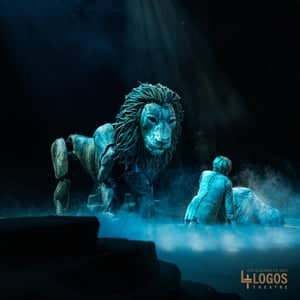
“Even when I was writing this this script, [God] was the lion behind me, roaring, giving me the strength for the last mile.”
The audience responded to the performances with words such as spectacular, epic, adventurous, and immersive. “I think one thing that Narnia fans have appreciated about our adaptations is I’m sticking true to the book,” Nicole said. “If there’s something in there that’s epic, we’re just going to have to go for it and make it happen.”
Sharing the Adventure and Magic
As the Logos Theatre embarked on their adventures to recapture the experience of Narnia, they knew they needed a way to portray Aslan that was regal and more respectful than someone dressed in a fur suit. The art of their advanced puppetry was then born.
The other puppets seen on the stage, including a cat, the two talking horses, and the wild lion, appear before Aslan is revealed. The puppeteers are tasked to inspire laughter and emotion in the audience while using puppets built from foam, wood, and metal. “If we’re doing our job right, [the audience] is not distracted by a puppet or a performance, but they’re invested in these characters,” said Justin Swain, puppet master. “Then these [spiritual] truths will hit home a lot deeper.”
The stunts, sound effects, music, and creativity were unlike any play Chloe Condron (Sr., MI) had ever seen. “They told the story just like a movie would,” she said. “I didn’t know you could do [all] that in a live performance!” Having grown up with horses, Jillian Hernandez (Sr., TX) was impressed with how the puppeteers handled the horses. “It was so realistic, even in the small movements,” she said.
“I didn’t know you could do [all] that in a live performance!”

“Their storytelling technique is one of the best,” said Josiah Tyler (Sr., Brazil) who noticed many small details. “I started to forget that they were life-sized puppets and really got invested in the story being told. It is effective because it is so different from usual, a very powerful method of storytelling. They are very good at creating pictures on stage that say a lot more than just the lines.”
Lee McDaniel (Jr., GA) felt the director retold the story just as the author intended. “I could see the spiritual picture throughout the play of how Aslan was representative of God.” Lee could relate to the parallels that Shasta and Aravis represent the common Christian on their walk with God.
“It’s not about the applause,” shared Justin Swain, “but when you hear it you know the audience got it.”
As the Strattons continue sharing biblical truths through the Chronicles of Narnia, Noah Stratton said, “We want to be the best because of our access to Him.”



